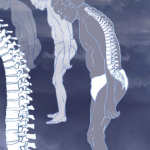Historically, ankylosing spondylitis was considered mainly a male disease. But it has become evident this predominance is not as great as previously believed. Here we discuss recent developments in the area, including potential differences between the sexes in symptom and disease burden, immunological and genetic background, diagnostic delay, treatment response and ongoing research questions.
Medical Differences Between Men & Women
Though historically underappreciated, a growing body of research has underscored important differences between men and women across many areas of medicine, including heart disease, human immunodeficiency virus and depression, influencing both disease presentation and treatment efficacy.1 In addition to obvious differences related to reproduction, men and women, on average, show important differences in immune function, brain organization, pain perception, metabolism, drug pharmacodynamics and lifestyle risk factors.2
Generally speaking, these differences may be mediated by sex, gender or a combination of the two. Differences due to sex occur from direct biological effects of chromosomal composition, reproductive organ formation and their downstream of effects on sex hormone levels.1 As gene regulators, sex hormones may have a variety of complex effects, potentially serving to inactivate or activate the expression of genetic pathways important in disease pathophysiology.3 Differences due to gender occur due to a person’s self-representation and a complex milieu of social and cultural factors.1
Axial spondyloarthritis is one disease in which sex differences seem to play an important role. This includes both the earlier diagnostic category of ankylosing spondylitis (now considered roughly equivalent to radiographic axial spondyloarthritis in the official guidelines), as well as the category of non-radiographic axial spondyloarthritis, in which sacroiliitis cannot be demonstrated on standard radiography but can be visualized on magnetic resonance imaging (MRI).4
Changing Categories of Ankylosing Spondylitis & Axial Spondyloarthritis
To understand how these differences have played out over time, it is helpful to remember how diagnostic categories for axial spondyloarthritis have evolved. Vega Jovani, MD, PhD, a physician in the rheumatology department of University General Hospital of Alicante, Spain, explains, “In the modified New York criteria for diagnosing ankylosing spondylitis, it was necessary to have sacroiliitis on X-ray imaging.”5 Yet women, on the whole, display fewer radiographic changes compared with men.
In 2009, the Assessment of SpondyloArthritis International Society (ASAS) published classification criteria of axial spondyloarthritis, including both non-radiographic and radiographic subtypes.4 Dr. Jovani explains, “These specific ASAS criteria made the disease and its prevalence more visible in women.” Generally speaking, radiographic axial spondyloarthritis and non-radiographic axial spondyloarthritis can be thought of as different stages or manifestations of the broader axial spondyloarthritis category.6


